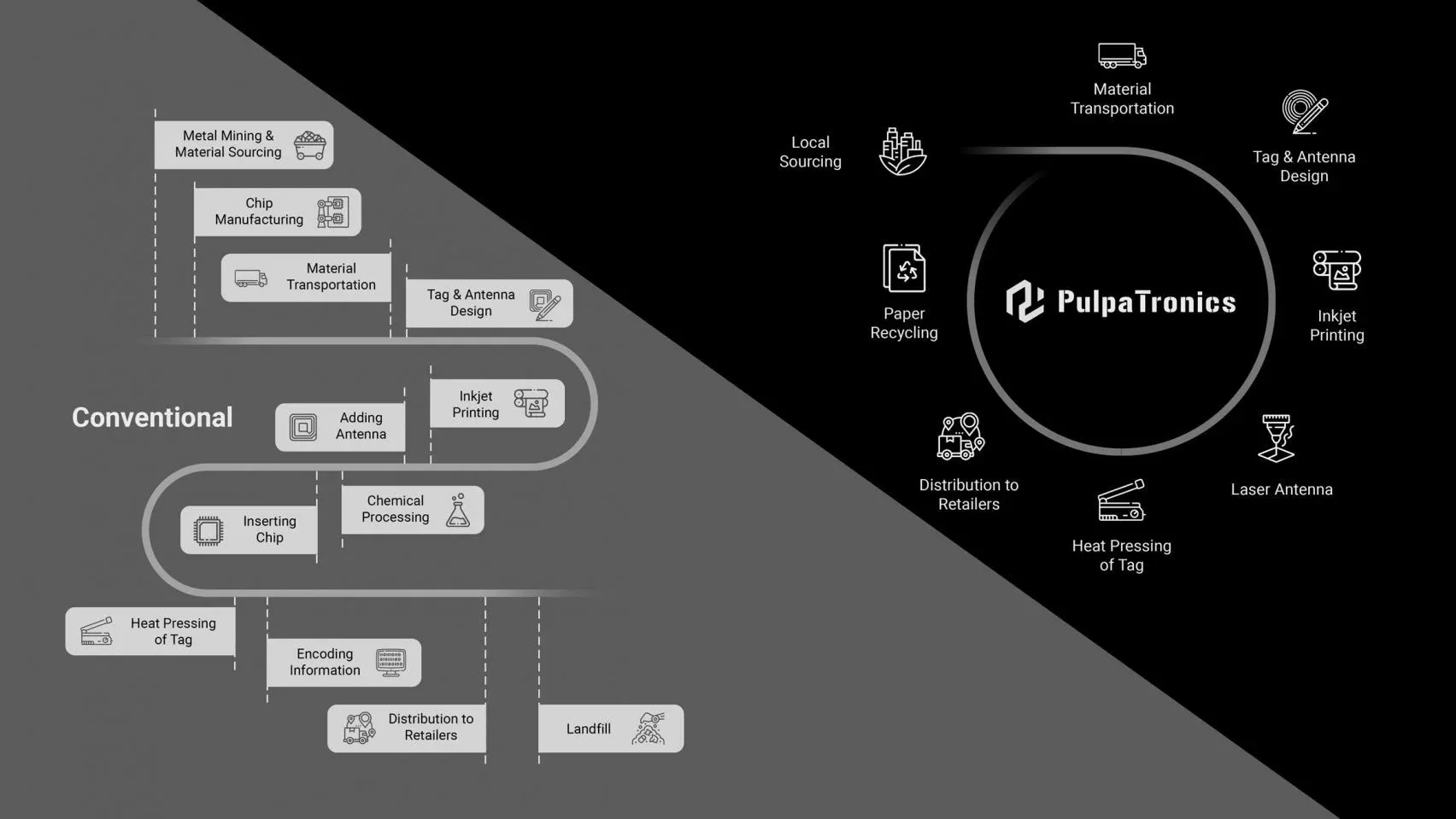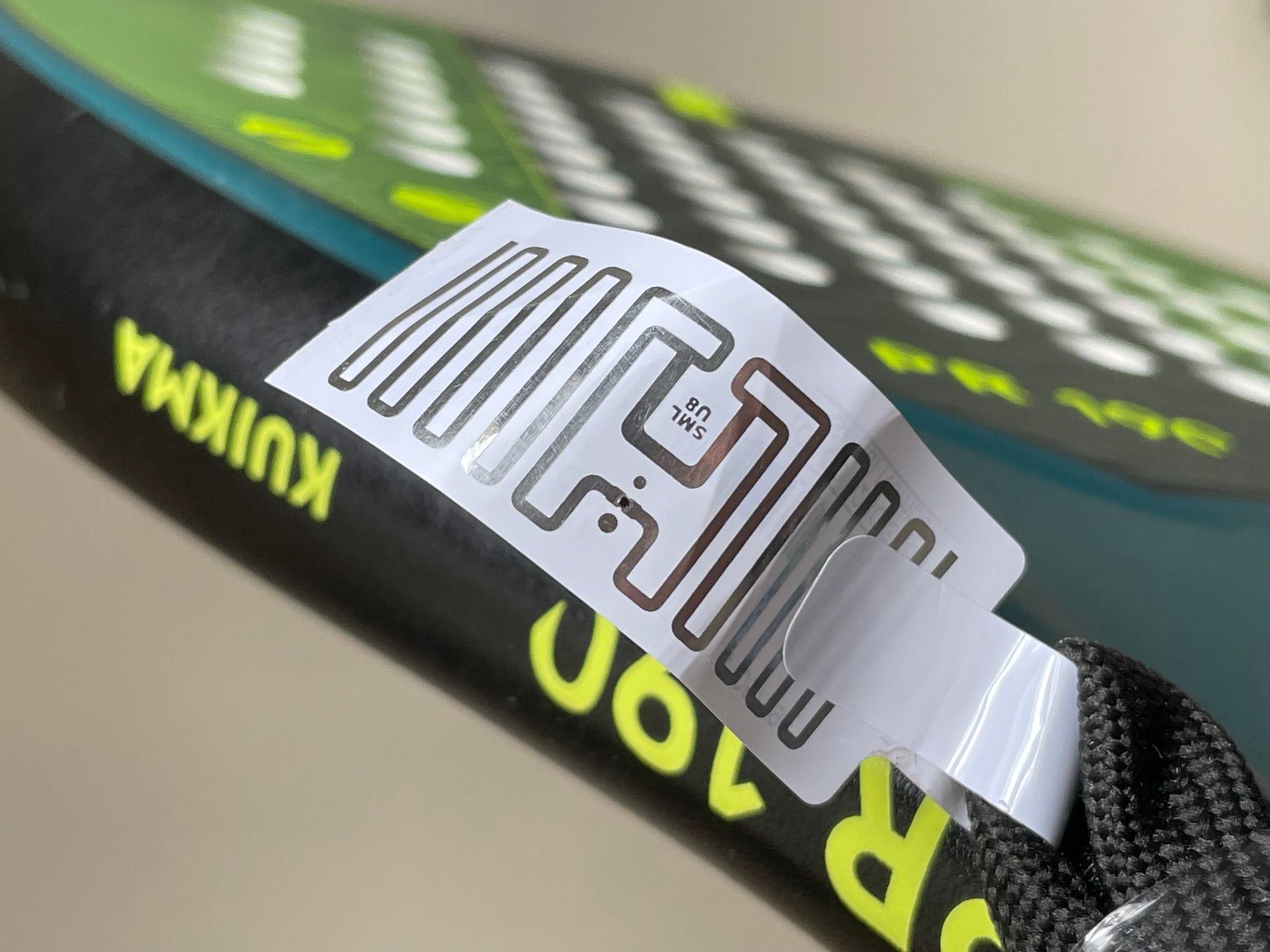The paper RFID
Eco-friendly, cost-effective, and remarkably simple. Learn how PulpaTronics is rewriting the RFID rulebook.

In the fast-paced world of technology, innovation often takes the form of complexity—cutting-edge gadgets, intricate circuitry, and high-tech solutions. However, every now and then, there comes an innovation that brings simplicity to the forefront, changing the game while staying grounded in the basics. This is precisely what the team at PulpaTronics has achieved with their groundbreaking paper RFID tags.
But before we delve into this clever innovation, let's start with the basics. What is RFID, and where is it used?
The basics of RFID
Radio-Frequency Identification (RFID) might sound like a mouthful, but it's a technology that has quietly become a part of our everyday lives. In simple terms, RFID allows for the wireless tracking and identification of objects. Unlike traditional barcode scanning, RFID doesn't require a visual line of sight. Instead, it operates by sending and receiving radio waves to and from RFID tags.

Where you find RFID
You'll find RFID technology in various applications, but it's most commonly used in retail, logistics, and inventory management. Ever wondered how those self-checkout machines at the grocery store seem to magically identify your items without scanning? That's RFID at work.
It's also instrumental in tracking packages during shipping, managing inventory in warehouses, and even preventing theft in retail stores.
Now, here's where things get interesting—the downside of current RFID tags.
Both technologies used to store and retrieve data, but they have distinct characteristics. Similarities lie in their data storage capabilities and applications for contactless interactions. However, RFID uses radio waves for data transmission and can read tags from a distance without direct sight, making it ideal for inventory management and secure access. In contrast, QR codes are 2D barcodes that rely on visual scanning through smartphone cameras, making them versatile for digital interactions but less secure. In essence, both technologies serve as efficient tools for data retrieval, but RFID excels in security and range, while QR codes offer simplicity and accessibility
The drawbacks of traditional RFID tags
While RFID technology has brought convenience to many industries, traditional RFID tags come with some environmental concerns. These tags typically contain metal and silicon components, and most importantly, a microchip. This combination of materials makes them non-recyclable and prone to ending up in landfills. In essence, they contribute to electronic waste, which we're all striving to reduce.
Moreover, traditional RFID tags are energy-intensive. They require power to operate, which means they rely on batteries or active electronic components. This not only adds to their environmental impact but also increases costs for businesses.
Simplifying RFID with Carbon
Now, let's shift our focus to the innovative solution brought to us by PulpaTronics. Their approach to RFID is refreshingly simple yet incredibly clever.
PulpaTronics has crafted RFID tags entirely from paper, eliminating the need for metal, silicon, or power-hungry microchips. You might wonder how this is possible. The magic lies in the use of carbon—a substance as humble as a pencil's graphite. Instead of complex components, PulpaTronics uses a laser to mark a carbon-based circuit onto the paper's surface. This laser not only simplifies the manufacturing process but also changes the paper's chemical composition to make it conductive.
The result? RFID tags that are as environmentally friendly as a piece of paper with pencil markings. They can be recycled with household waste, reducing the environmental footprint of RFID tag production.
The impact of PulpaTronics' innovation
PulpaTronics estimates that their paper RFID tags can reduce carbon dioxide emissions by a whopping 70% compared to traditional RFID tags. Not only does this innovation benefit the planet, but it also makes business sense. It's expected to cut costs for businesses by half.

In conclusion
In a world where innovation often seems synonymous with complexity, PulpaTronics reminds us that clever innovation can be refreshingly simple. Their paper RFID tags, crafted with carbon and a touch of laser magic, offer a sustainable alternative to traditional RFID tags without the need for batteries or complex components.
To learn more about PulpaTronics and their game-changing technology, visit their website. In the quest for eco-friendly solutions, PulpaTronics stands out as a beacon of simplicity and innovation.
Keep an eye on this space, because sometimes, it's the simplest ideas that bring about the most profound changes.
P.S. there is also an RF-tag. Those are used for security and don’t contain information. They need to be deactivated through a subtle form of destruction. You put them in a container and there the RF-tag are exposed to strong electromagnetic waves.




